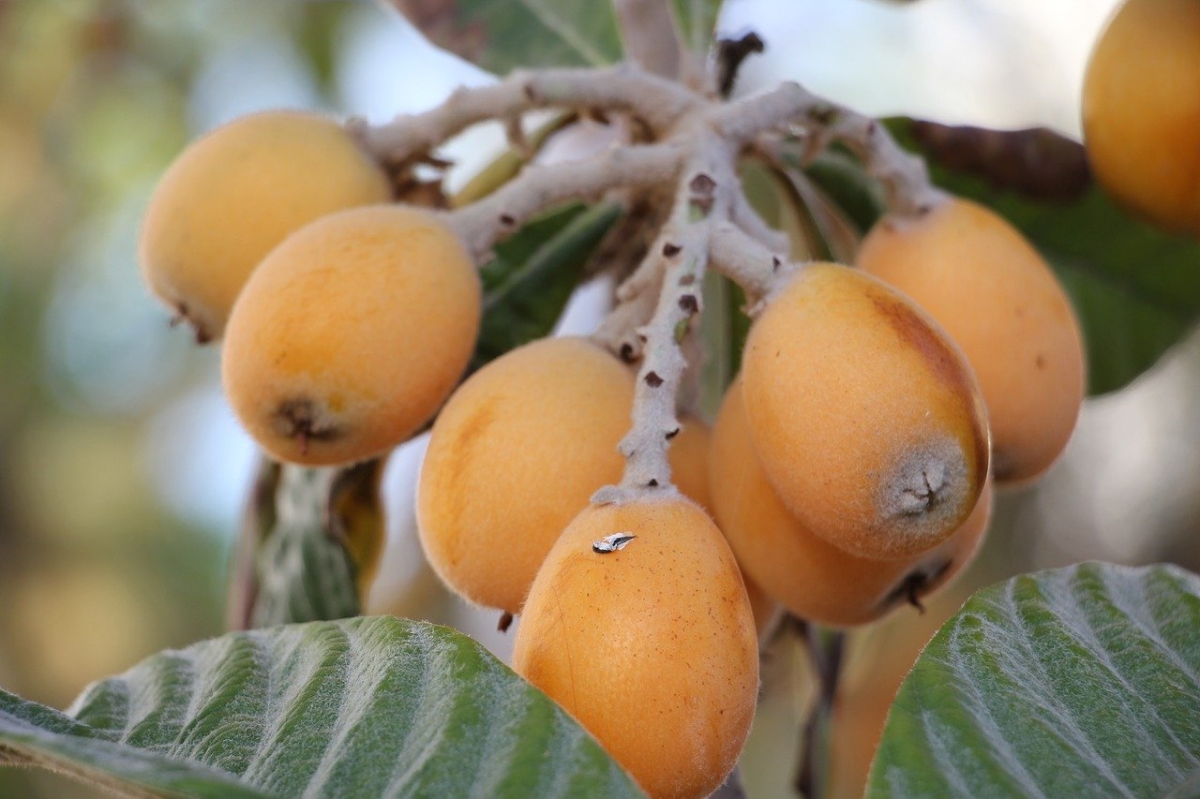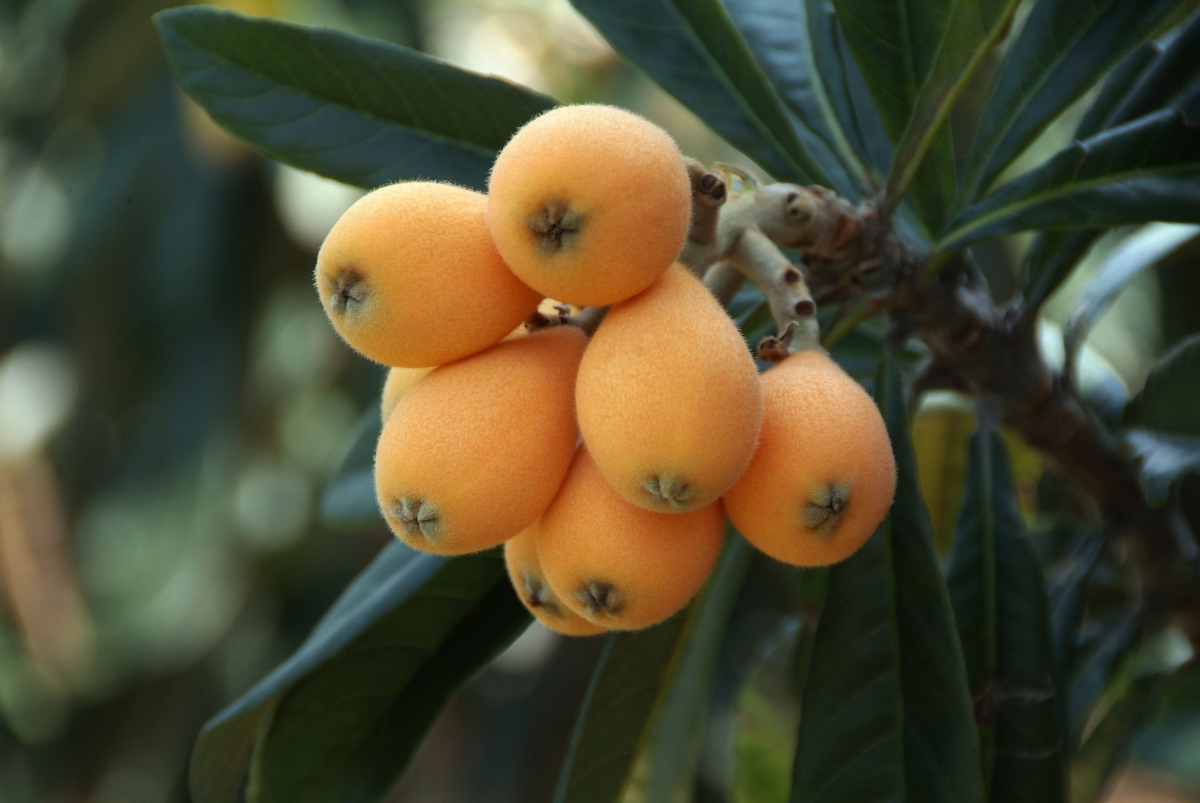
The loquat is one of those trees that we can have both in an orchard and in a garden of ornamental plants. And it is that we are not only talking about a plant with edible fruits -and delicious, by the way-, but also one that, thanks to its dense crown, provides a lot of shade. Nor can we forget its flowers, which can sprout very soon, in autumn; in fact, when the weather allows it, it begins to do so between October and November.
As if that weren't enough, she can handle both heat and cold, plus she has a reasonably fast growth rate from seed germination. The best thing is that it begins to bear fruit at an early age: more or less from 4 years old. For all these reasons, I firmly believe that it is a plant that should be cultivated much more than it is. Then I will tell you what it is like and what care it needs.
What is loquat?
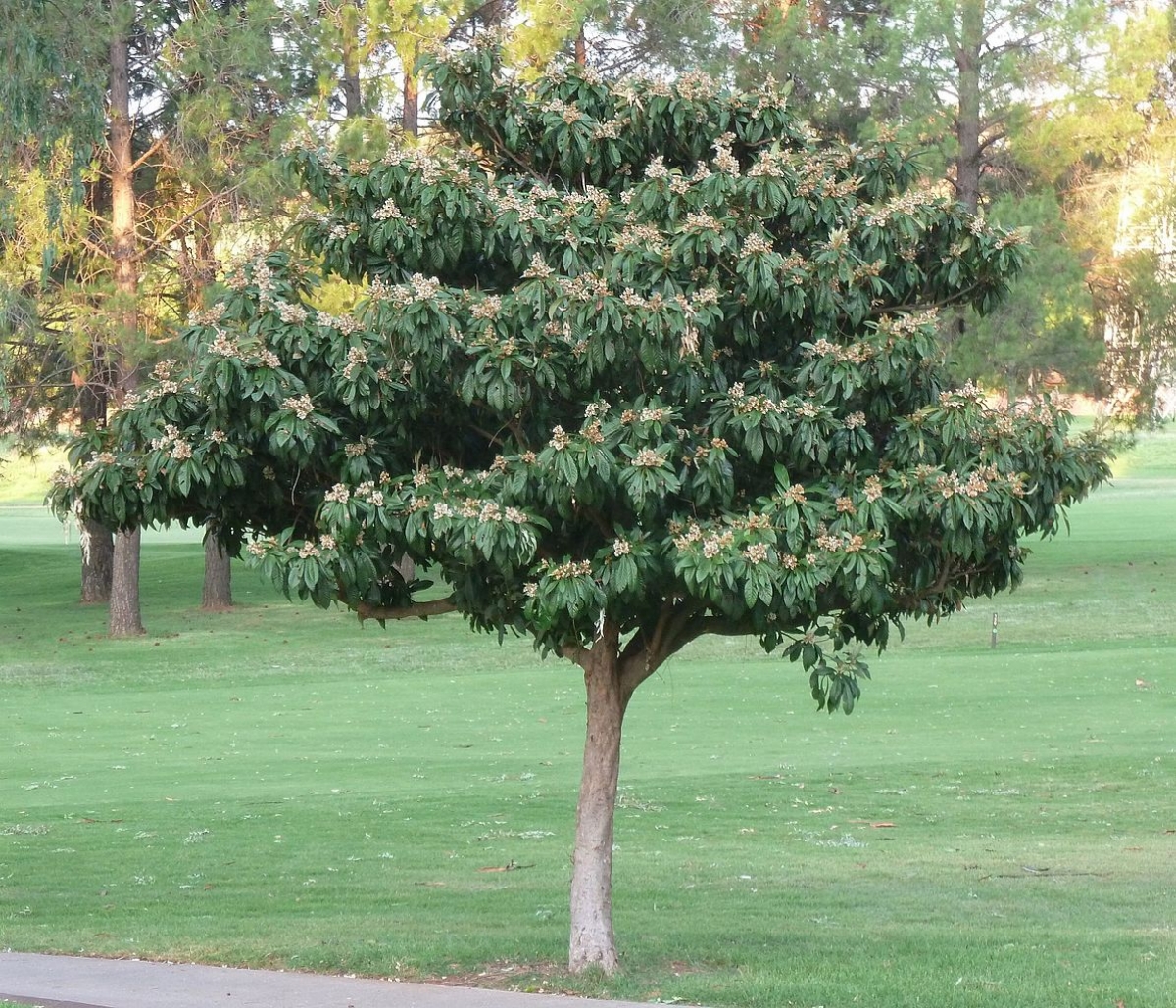
Image - Wikimedia / JMK
It is an evergreen fruit native to China. From that country it was introduced in Japan more than a thousand years ago, and where it has already become naturalized. It receives the common name of Japanese medlar or Japanese medlar to differentiate it from the European medlar (mespilus germanica), And It is a plant that reaches a height of approximately 10 meters., although the most normal thing in cultivation is that it does not exceed 5-6 meters, since it is usually pruned so that the fruits can be picked better.
The cup is wide, with a rounded shape, and is made up of oblong or elliptic leaves, coriaceous, and with a size of up to 30 centimeters long by up to 10 centimeters wide. They have a pubescent underside, and very marked nerves.
Blooms in fall. The flowers are grouped in panicles about 15 centimeters long, and each of them is between 1 and 2 centimeters wide, they are white and fragrant. It is important to know that they are hermaphrodites, which means that you only need one specimen to bear fruit. These fruits ripen in late winter or early spring, are pear-shaped, and measure between 3 and 6 centimeters long. The skin is yellow, orange, or sometimes reddish, and its flesh is white, yellow, or orange with a sweet, acid, or sub-acid taste.
What is?
The uses given to this tree are basically two: culinary and ornamental. Let's talk about them:
culinary and medicinal use
The most important use of the Japanese loquat is culinary. The fruits can be eaten raw.freshly picked from the tree. If preferred, it is also possible to eat them mixed with other fruits; you can even make desserts such as cakes, or wine.
Its nutritional value per 100 grams is as follows:
- Carbohydrates: 12,14g
- Fiber: 1,7g
- Fat: 0,20g
- Proteins: 0,43g
- Vitamin A: 76 μg (8% of the recommended daily amount)
- Vitamin B1: 0,019mg (1%)
- Vitamin B2: 0,024mg (2%)
- Vitamin B3: 0,180mg (1%)
- Vitamin B6: 0,100mg (8%)
- Vitamin C: 1mg (2%)
- Calcium: 16mg (2%)
- Iron: 0,28mg (2%)
- Magnesium: 12mg (3%)
- Phosphorus: 27mg (4%)
- Potassium: 266mg (6%)
- Sodium: 1mg (0%)
- Zinc: 0,05mg (1%)
For that also it is useful as medicine, since for example vitamin C strengthens the immune system, and fiber helps us with constipation. In addition, iron is essential to avoid iron deficiency anemia, a disease that in its initial stages can weaken you quite a bit.
In China, a medlar syrup is prepared that is also used to treat illnesses such as colds or flu.
Ornamental use
Another very important use, although perhaps somewhat less than culinary, is ornamental. It is a tree that provides plenty of shade, produces fragrant flowers, and tolerates frost very well. As if that were not enough, it does not require any special attention.
It combines wonderfully with other plants, and the best thing is that it does not have invasive roots. In fact, it is highly recommended to plant it in small gardens, to which it will provide a most interesting tropical touch.
What are the care of the medlar?
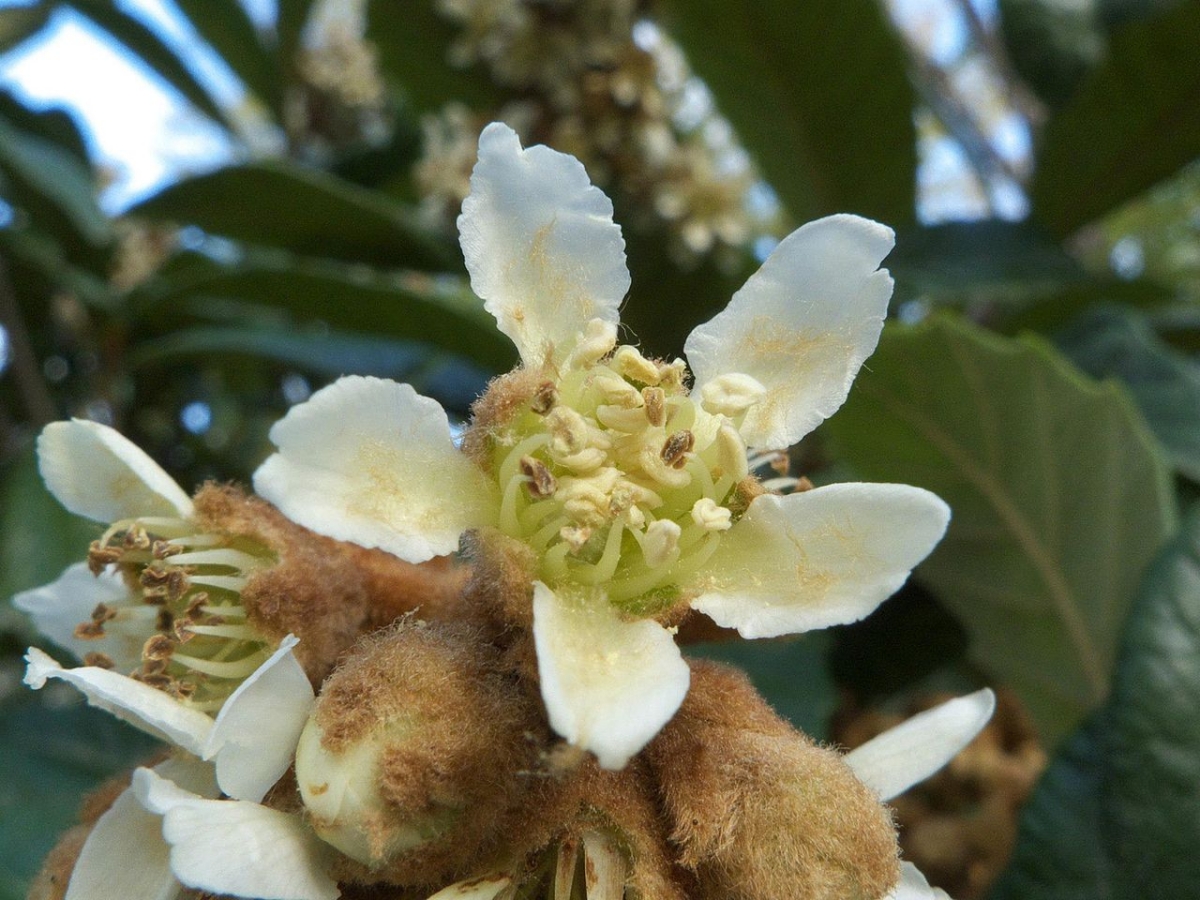
Image - Wikimedia / JMK
If you dare to have your own loquat, this is what you need to know so that it is good and you can taste its fruits:
Location
It is a tree that not only does it have to be grown outside, but it is also important that it is exposed to direct sun. We would make a mistake - in my opinion quite serious - if we grew it indoors or in a greenhouse, because neither heat nor frost harms it, rather the opposite: if it did not feel the passing of the seasons, it could not be healthy .
Earth
It is not demanding. It can grow in alkaline soil without any problem, as well as in those that are slightly acidic. Even if you are going to keep it in a pot for a while, you can put universal substrate on it (for sale here), which is used for many different plants; although I recommend you use a specific one for urban garden (for sale here), which contains the nutrients it will need to grow well for a season.
Irrigation
You have to water from time to time. It is not a tree that resists drought, but waterlogging does not suit it either. Because, I recommend giving it two waterings a week in summer, or even three if temperatures exceed 30ºC and the soil dries out quickly.; and one or two per week the rest of the year. We must pour water on it until the soil or the substrate is very wet, otherwise some roots would remain without hydration.
Humidity
Loquat thrives in places where the relative humidity of the air is high, like near the coast. When grown in areas where it is low, that is, less than 50%, the leaves dry out. To avoid this, you can spray it with rainwater when it is no longer in the sun.
Subscriber
It is worth fertilizing it from autumn, which is when it begins to bloom, until at least the end of spring.. For this, we will use fertilizers of organic origin, such as the manure of herbivorous animals (horses, cows, etc.), guano (for sale here), worm castings (for sale here), compost.
A fortnightly contribution will help you produce more fruit, and also to be healthier if possible.
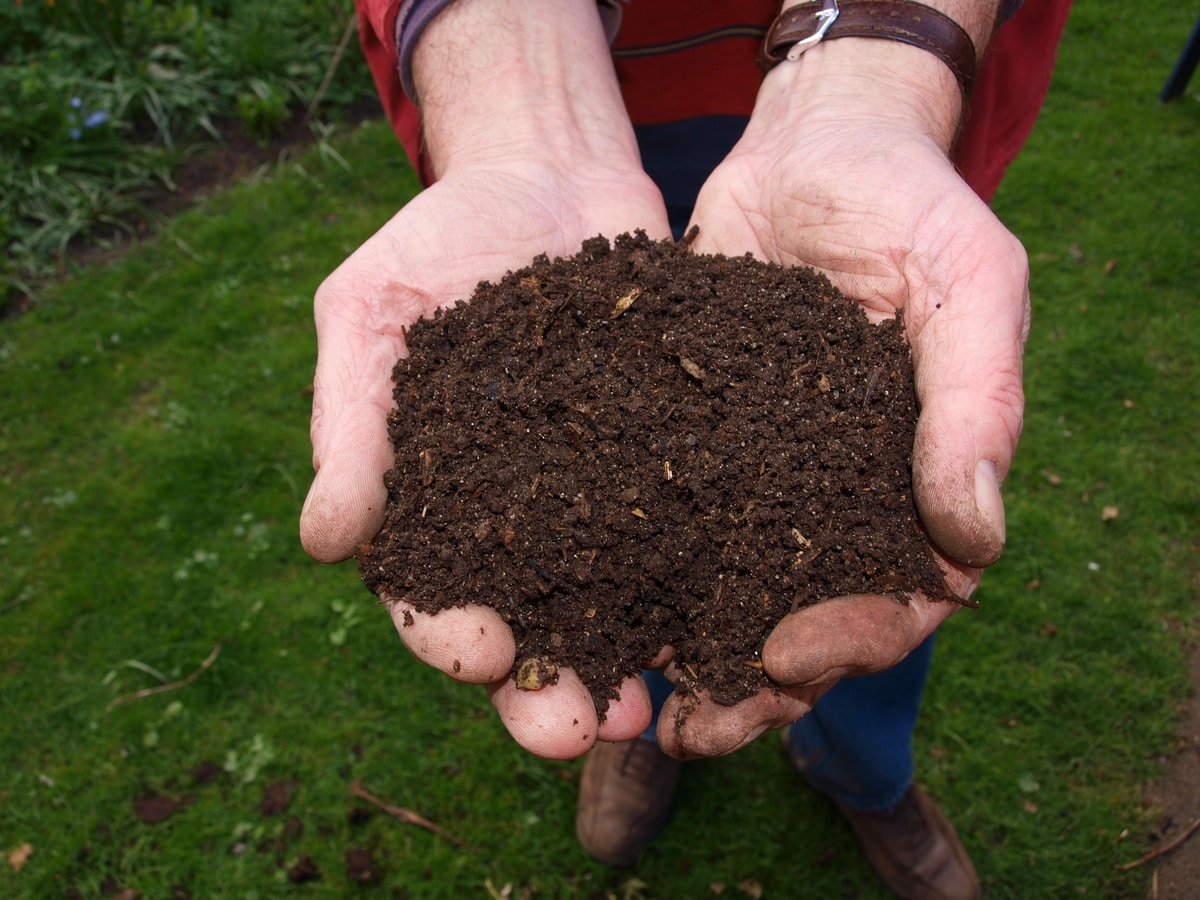
Pruning
Doesn't really need pruning. Only dry or broken branches should be removed. If you think it convenient, you can also reduce the length of those that are growing long after the fruits have ripened, in January or February.
Multiplication
Multiplies by seeds, which germinate very well in spring if they are planted in a pot with planting soil, and placed in a sunny spot. Sometimes it is also grafted, but to obtain fruit, grafting is not vital, since the flowers of the medlar are hermaphroditic.
Plagues and diseases
Can have mealybugs, aphids and fruit fly. These pests are combated with ecological insecticides, such as diatomaceous earth (for sale here), or yellow sticky traps (for sale here).
As for diseases, it affects the loquat speckled (Fusicladium eriobrotryae), which causes round spots of a dark, almost black color to appear on the branches and fruits; and the purple stain which, as its name indicates, causes the appearance of purple spots on the fruits.
The first is treated with copper-based fungicides (for sale here) from autumn; and the second providing calcium and zinc to the tree, since the lack of these nutrients is what triggers the disease.
Rusticity
The medlar bears frost down to -12ºC, and heat up to 40ºC if it has water.
Do you dare to have your own loquat?
